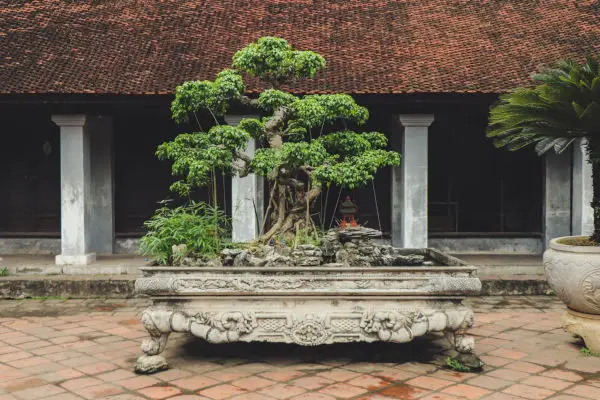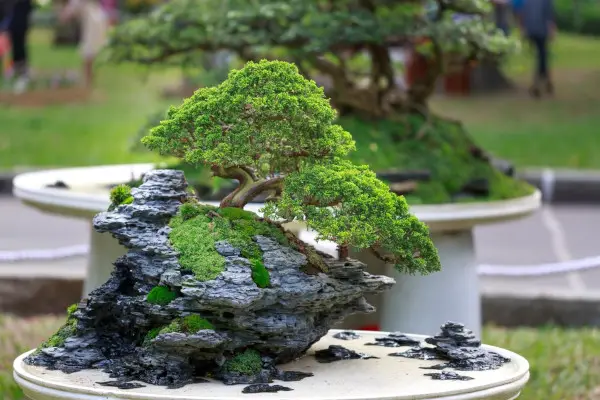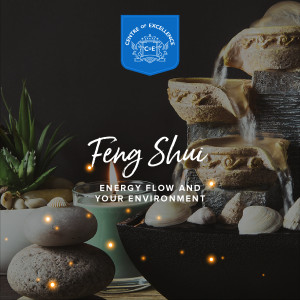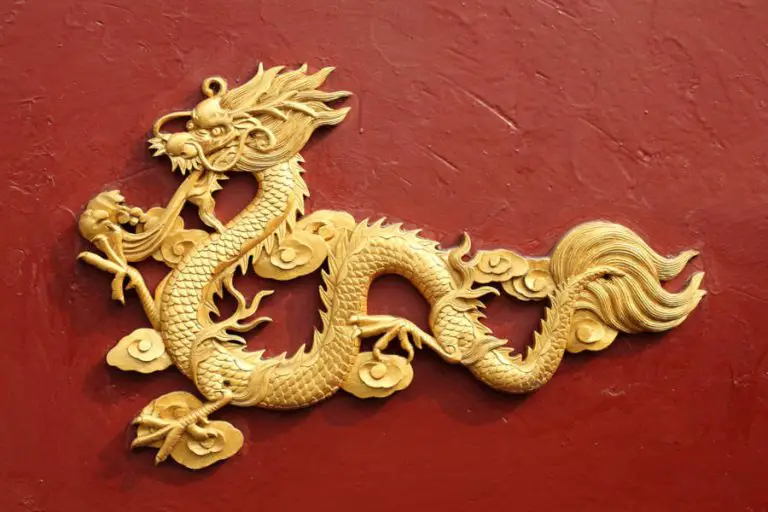The Chinese Elm (Ulmus Parvifolia) is one of the most popular types of bonsai trees that are grown by many bonsai and gardening enthusiasts.
A key reason for this popularity is because unlike many other types of bonsai trees that are difficult to manage and need lots of concern and time, the Chinese Elm bonsai is relatively easy to handle due to its large natural resilience and vigor.
In fact, many bonsai experts would recommend the Chinese Elm tree for beginners and first-timers who are just looking to cultivate their first bonsai. The Chinese Elm, for instance, can tolerate several neglects due to its vigorous nature and can thrive both indoors and outdoors for versatility.
However, if you plan to keep the Chinese Elm bonsai indoors, you must make sure to keep it in a cool and humid room and it will require a little more maintenance because the soil has to be kept moist at all times. Simply use a water spray to keep the soil moist every time you feel that it has dried out.
While the Chinese Elm tree bonsai can tolerate neglect better than other bonsais, we’d still recommend keeping a good routine in maintaining your bonsai tree if you plan to adopt a Chinese Elm bonsai.
Different Styles of Chinese Elm Bonsai
In the world of bonsai, there are five basic styles:
- Formal upright (Chokkan)
- Informal Upright (Moyogi)
- Slanting (Shakan)
- Semi-Cascade (Han-Kengai)
- Cascade (Kengai)
Out of these five, only Chokkan is not suitable for the Chinese Elm tree. The reason is fairly simple: naturally, the Chinese Elm tree doesn’t come with a straight trunk, although with today’s technologies it’s possible to force the shape straight.
The other four, however, are suitable for the Chinese Elm tree, and we’ll discuss them one by one below:
Informal Upright (Moyogi)
A very popular style in the bonsai world, and is considered the most “natural” out of the five basic bonsai styles with the curves and bends of the bonsai looking similar to what should occur in trees in their natural habitat. A common approach in cultivating a bonsai with this style is to look for a tree that has already been “stressed” by nature, for example, trees with broken trunk lines due to snow or storm.
To make Chinese Elm bonsai in this style more majestic, we can also place the tree branches outside the curves whenever possible.
Slanting (Shakan)
This style depicts a tree that has been forced by wind and gravity force to grow slanted. Slanted bonsai typically give an impression of strength and age, showing its ability to resist wind and gravity.
For this style, you’ll need a Chinese Elm tree with strong roots to balance the slanted posture, otherwise, the tree will tumble because of imbalance. Relatively difficult bonsai style to create and maintain, mainly because the botanist needs to find a tree with the right balance in size, root placement, branches, and how extreme the angle of tilting is.
Chinese Elm bonsai trees and accessories. (Aff.link)- Opens in new tab
Semi-Cascade (Han-Kengai)
In this style, the bonsai is designed to imitate the condition of a tree that hangs from a cliff. Unlike a full cascade style, this style only allowed the bonsai trunk to grow upwards first until it reached a certain distance, and after that, we’ll make the branch and the main trunk grow downwards.
It’s important to pay attention to the angle of the growth during the downwards growth since it’s important to maintain a less abrupt bending in the semi-cascade style. To prevent the bonsai trunk from snapping due to this bent angle, we can use a deeper pot to encourage a stronger root growth so it can sustain the abnormal growth.
Feng Shui Diploma Course
- Certified Course
- Accredited Course
COURSE INFORMATION
- 10 Modules
- Lifetime Access
- Study Group Access
Use “LIGHTWARRIORSLEGION466 ” code for 70% off.
Cascade (Kengai)
Similar to the semi-cascade style, but took the cliff-hanging growth to the next level. The cascade style allows us to also “bend” the main trunk downwards, and in extreme cases, the botanist will allow the branch and the main trunk to extend even far below the pot
The most difficult style to master, and you’ll need to invest a lot more time on the tree when compared to the other styles, mainly because you’ll need to nurture the tree carefully to encourage the extreme angle of growth. Maintaining balance is also very important to ensure the pot is not tilting when on display.
While there are certainly other styles than these five basic styles (four available for the Chinese Elm tree), all other styles are technically derivations from these basic styles, and by understanding these five, you’ll be able to understand the others.
Related reading: “Top 5 Amazing Natural Places in China“
Chinese Elm Bonsai Pruning
Pruning is one of the most important steps required in cultivating and taking care of a bonsai, a crucial step to make sure the bonsai is in the right shape and style.
Fortunately, when it comes to pruning, the Chinese Elm is considered one of the easiest bonsai trees to prune. This is because they have relatively soft branches and shoots, so it won’t really take too much time to prune the easy-to-cut branches and shoots.
Also, the Chinese Elm bonsai has a relatively fast growth rate, making it an ideal choice for beginner botanists that only start managing their first bonsai. Even if you’ve made a mistake when pruning the branches or leaves, they will be naturally repaired within only several months as long as the bonsai has enough water and fertilizer, and is exposed to plenty of sunlight.
When wiring a Chinese Elm bonsai (for shaping and styling), the preferable time is around August so we can make sure the wiring will hold at least until late autumn. By then, the branches of the bonsai should have taken a firmer shape to create the desired style.
Chinese Elm Bonsai: Caring and Maintenance
While as discussed, taking care of the Chinese Elm bonsai is relatively easy compared to many other bonsai trees, there are still several things you should take into consideration:
Making sure your Chinese Elm bonsai is at the right temperature
In general, the Chinese Elm bonsai should stay in temperatures between 15 to 20 degrees Celcius (60 to 70 degrees Fahrenheit). It tolerates higher temperature better than the cold, so during the summer you can put it outdoor, but you should move it indoors when temperatures drop below 15 degrees Celcius (60 degrees Fahrenheit)
Enough Sunlight and Air Circulation
You need to make sure that the Chinese Elm bonsai can get enough direct sunlight in the morning while you need to expose it to indirect sunlight during midday and afternoon.
Sufficient air circulation is also necessary to keep the bonsai humid. Air circulation would also determine the tone of the wood skin: the more airflow, the more natural it will look.
Make Sure The Soil Is Always Moist
As with any plant, watering is the most important aspect when taking care of the Chinese Elm bonsai tree. Check the soil on a daily basis whether it’s moist enough.
When you see the soil’s color is lighter than usual, touch and check whether it’s already too dry. If so, give it some water to keep the bonsai healthy.
Related reading: Feng Shui Made Easy: Discover the Power of Succulents in Your Home! – Opens in new tab
Fertilizer
To ensure your Chinese Elm tree stays healthy, don’t forget the right fertilizer. High nitrogen fertilizer is the best solution for the early growth of Chinese Elm trees. When it’s older, use a balanced fertilizer to maintain quality.
Watch Out for Pests
As with other bonsai trees, beware of insects and pests that might infect the Chinese Elm bonsai. Above anything else, ensure a proper airflow circulation to keep the leaves and branches healthy.
To protect the Chinese Elm tree from pests, you can spray it with a mixture of 1 tablespoon of dish soap and 1 quart of tepid water (you can also use Neem Oil in place of water). After spraying, you can rinse it with normal water.
Re-potting When Needed
Repotting is sometimes needed to make sure the bonsai grows healthy. For Chinese Elm bonsai, you’ll typically need to repot it once every couple of years. As it grows older, you’ll more rarely need to change the pot.
The best time to repot is during spring, so you might need to put pruning into consideration since it’s better to prune the bonsai after repotting.
Common Issues and Problems With Chinese Elm Tree bonsai
Although the Chinese Elm tree bonsai is, as discussed, one of the easiest bonsai trees to cultivate and maintain, doesn’t mean it’s going to be 100% free from problems. However, with the right knowledge and enough diligence, all of these issues are manageable.

Here are some common problems with Chinese Elm tree bonsai you should put into consideration:
Yellow Leaves
Typically yellow leaves occur when the Chinese Elm tree doesn’t get enough sunlight. You might have put enough fertilizer, water, and air circulation, but when it doesn’t get enough sunlight, it can trigger yellowing leaves.
To tackle this issue, first, you’ll need to re-adjust the bonsai’s humidity whether it is indoor or outdoor. Make sure that the bonsai will get a balanced humidity while ensuring it’s exposed to enough sunlight every day. If you do this correctly, it should only take several months for the bonsai to grow healthy leaves again.
Little Flies All Over The Bonsai Tree
This is a common symptom once your bonsai starts to get infested by pests.
To counter this issue, all you need is to spray a little bit of insecticide on the Chinese Elm bonsai tree. You can use organic insecticide if you want, but most likely you’ll be able to easily cure this issue without any complications.
Drowning Issue
This problem happens when you put in too much water and don’t use well-drained soil in your pot. Too much drowning can cause the bonsai barks to rot and discolor, as well as dried leaves.
Tackling this issue is fairly simple: make sure to use well-drained soil and give the bonsai enough (not too much) water.

Dutch Elm Disease
This is a type of fungal disease that will damage the upper branches of the Chinese Elm tree, causing the leaves to turn yellow and eventually die during summer. As you might have noticed, this initial symptom is quite similar to the yellow leaves problem above when the bonsai didn’t get enough sunlight.
However, you should also check whether there are spots located throughout the bonsai besides this initial symptom. If so, you should apply fungicides to tackle this issue.
You can also try to prune the bonsai and hope the disease stops. Make sure you keep the infected branches sealed when you dispose of them to make sure they won’t infect other branches.
Although Chinese Elm is fairly resistant to diseases, always inspect the bonsai regularly to check whether it is infected or not. The earlier you spot this issue and the earlier you cure the bonsai, the more likely you can reverse the damage.
Chinese Elm bonsai trees and accessories. (Aff.link)- Opens in new tab
Scab or Canker Disease
The common symptoms of this disease are fading color on the leaves, as well as poor growth. Another potential symptom is shown in the swelling of the barks, and this problem usually appears after pruning.
When you see these symptoms, especially right after you prune your bonsai, you can try to isolate the problem by cutting out the infected area and applying a wound paste.
This disease is commonly caused by wrong pruning practices, but can also occur when there is too much nitrogen in your fertilizer. Keep in mind that growing Chinese Elm bonsai needs proper balance in the fertilizer, and should be carefully maintained.
End Words
The Chinese Elm tree is among the most favorite bonsai trees because it is:
- Easy to handle: Chinese Elm is more tolerant when you mismanage it and has relatively fast growth and thick trunks.
- One of the most beautiful bonsai trees: famous for its strong trunks, making it easy to shape into a bonsai with a great character and artistic appeal.
- Versatility: you can place the Chinese Elm bonsai both outdoors and indoors whenever you want it to be. The only rule is to make sure that your bonsai gets enough sunlight.
Want to learn more about Feng Shui? Take a look at these Courses and Books – Aff.link
Stay in Touch
 Join our newsletter by using the forms on this website or click here!
Join our newsletter by using the forms on this website or click here! Follow us on Google News
Follow us on Google News Follow us on Facebook
Follow us on Facebook
Featured Image by Quang Nguyen Vinh from Pexels






